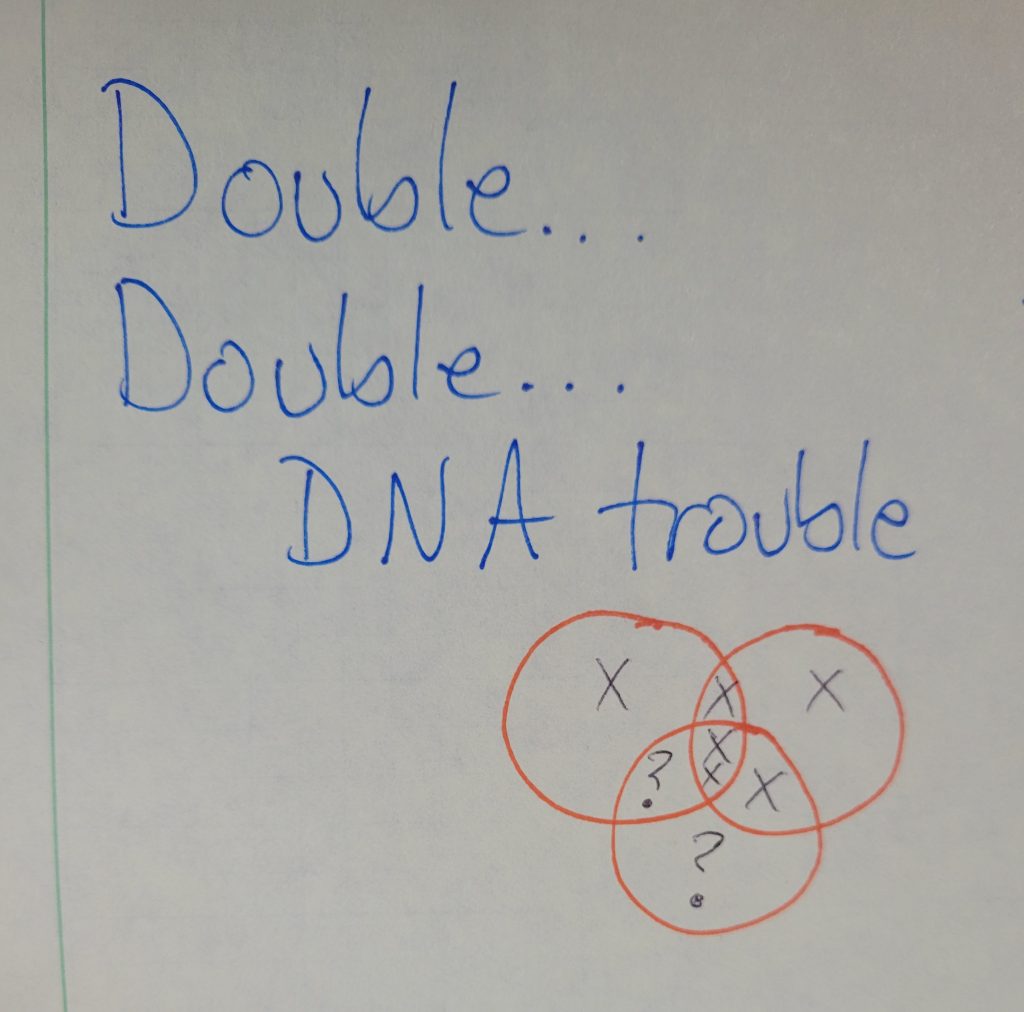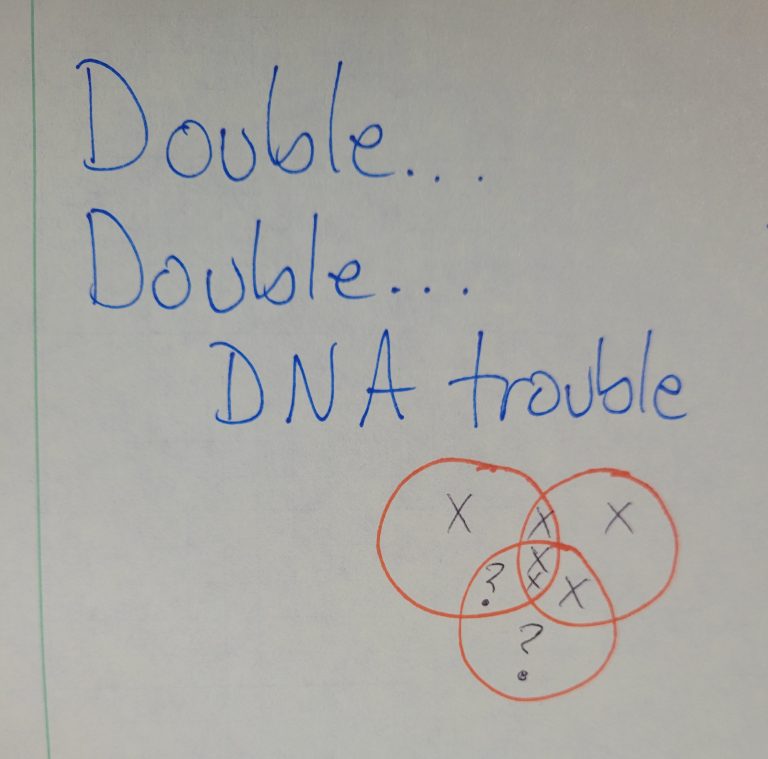AncestryDNA recently released a significant update in matches to individual tests. It was time for me to review my matches–just not all of them.

One reason I had a DNA test done was to try and make some connections to my Irish immigrant ancestors, Samuel and Annie (Murphy) Neill. These Irish immigrants married in New Brunswick, Canada, in the 1860s and migrated to Illinois with Samuel’s brother Joseph before the 1870 census enumeration. Samuel’s origins (born in the 1830s) in NewtonLimavady, County Derry, Ireland, were known before I took the DNA test. My matches did confirm one suspected brother of Samuel, Alex–who remained in Ireland. A suspected sister based upon vital records in the area (Roseanne [Neill] Scott) has not been confirmed with any DNA matches and cannot be located after birth records for her children in the 1880s. Annie’s Irish origins are unknown with any specificity.
There are approximately twenty descendants of Samuel and Annie whose DNA test results are in AncestryDNA.
It was hoped that DNA matches to other known descendants of Samuel and Annie would be more distantly related to me that the descendants of Samuel and Annie are and that those more distant matches would either be descendants of one of Samuel’s ancestors or one of Annie’s ancestors–but not descendants of Samuel and Annie. I’ve made significant headway on tying matches to descendants of Samuel’s brother Alex. The thought is that some of those shared DNA matches with other descendants of Samuel and Annie are related to me through Annie’s family and not through Samuel’s.
But…
There’s always a but. In this case there are two. The first is that the relationships predicted by AncestryDNA are just predictions based on amounts of shared DNA. Genealogically I am more closely related to descendants of Samuel than I am of Alex–because Samuel is my great-great-grandfather and Alex is his brother. There are some descendants of Alex with whom I share more DNA than I do with descendants of Samuel (based on what I currently know it does not look like we are related in more than one way). The amount is not huge, but serves as a reminder that the amount of shared DNA with one match may be slightly greater than the amount of shared DNA with someone who is related to you one generation closer. That’s the first but: relationships are not known precisedly based on an autosomal DNA test.
The second but is a bigger one and requires me to stay on my toes.
Three children of Samuel and Annie married grandchildren of their neighbors James and Elizabeth Rampley, including my great-grandfather Charlie Neill. This means that many descendants of Samuel and Annie Neill (including me) are also Rampley descendants. Descendants of the Neill-Rampley marriage share more matches with me than other children of Samuel and Annie Neill.
So to not create additional confusion and skew my analysis with multiple relationships, my attempts to locate more distant Neill-Murphy relatives focuses on shared matches that I have with descendants of Samuel and Annie Neill who are not also descendants of James and Elizabeth Rampley. That leaves me with DNA matches of Neill descendants who did not marry into the Rampley family.
Fortunately several of those descendants have done DNA tests. Unfortunately a few of them are related to me yet other ways or have shared relatives with other families of mine. This is what happens when your family has lived in the same small area for generations with some families migrating to that area from other shared small areas.
Fortunately for me one son of Samuel and Annie married outside my genetic tree and that son moved to Montana where he married and had several children. The descendants of that grandson–several of whom have done DNA tests are where I have focused my searches because they do not have overlap with my families.
Reminders:
- Relationships based on the autosomal DNA test at AncestryDNA are predictions.
- Always consider multiple relationships to individuals–especially if your family remained in the same area for generations.
- Look for more distantly related matches to known descendants of your problem person.
- Begin your search for those more distantly related matches with a family member whose migration pattern took them away from where your family lived.


No responses yet